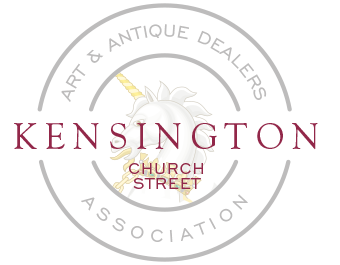Jorge Welsh Works of Art is hosting a showcase on Chinese export armorial porcelain.
Armorial symbols visually identify either a particular family or a religious, military or national organisation. The use of these symbols was widespread in Europe by the time Westerners initiated direct trade with China in the 16th century and, as soon as Europeans were able to commission Chinese porcelain with tailored designs, they became an important feature of privately ordered porcelain. Armorial designs – including coats-of-arms, shields, crests, and mottoes – were easily recognisable by their contemporary countrymen, demonstrating allegiance to a leader or a faith, or embodying a very personal connection with landed gentry, political and military leaders.
Surviving examples of Chinese armorial porcelain are particularly valuable from a historical perspective due to their well-documented past; unlike most types of porcelain made for export, armorial porcelain can often be dated to within a decade of when it was made. These hybrid porcelains are one of the clearest examples of cross-cultural dialogue that was taking place at the time of production. The examples shown in this showcase range from the Wanli (1573-1620) to the Qianlong periods (1736-1795).
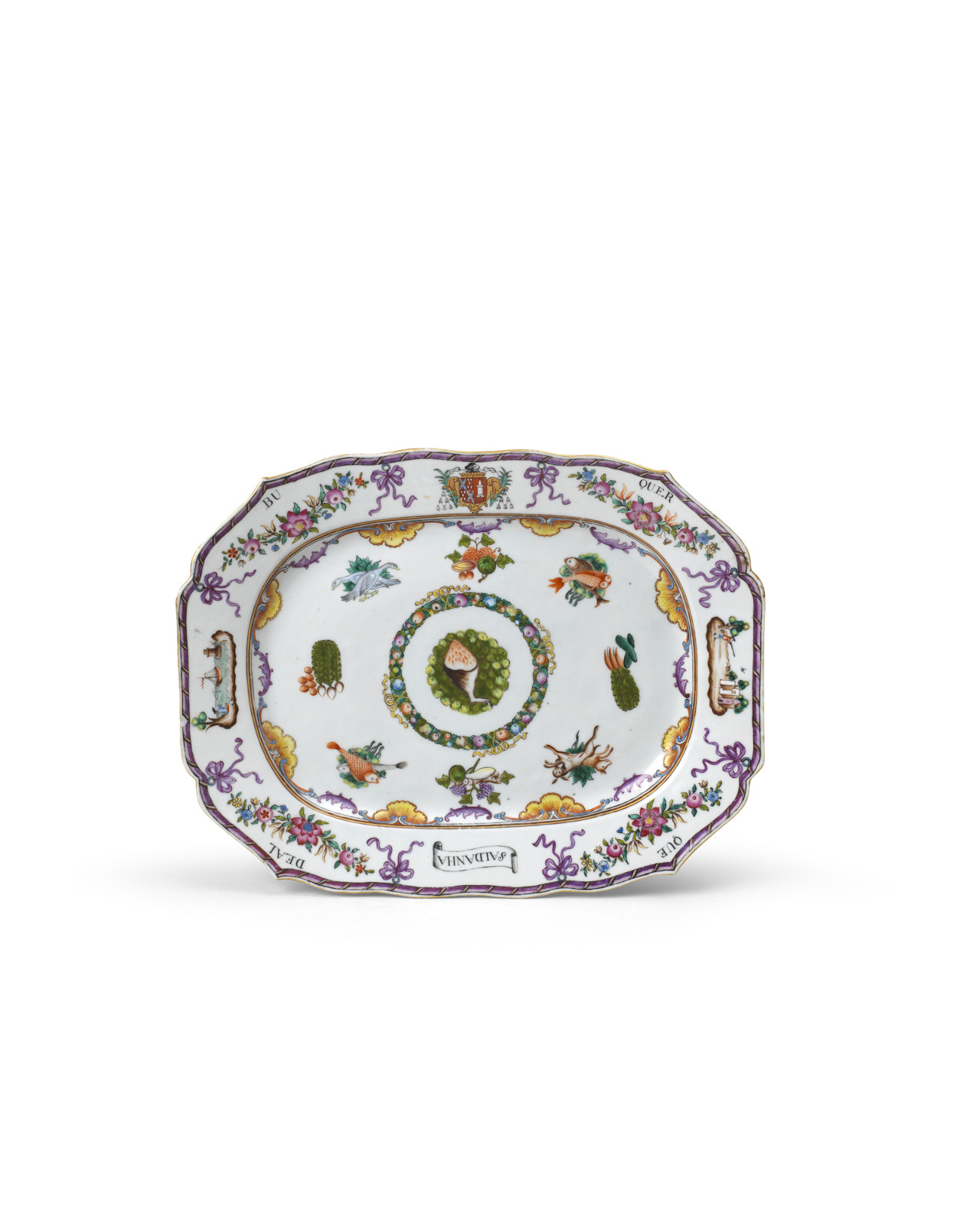
Meat dish with the arms of Saldanha e Albuquerque. Porcelain decorated in overglaze famille rose enamels and gold
China — Qing dynasty, Qianlong period (1736-1795), ca. 1765
L. 33.7 cm W. 26.2 cm
An oblong tureen stand modelled with scalloped edges. It is decorated in overglaze enamels of the
famille rose palette and gold, with a central medallion enclosing a severed leg of an animal reserved
on a leafy green and yellow ground, all within an elaborate and colourful wreath of fruit and foliage
surrounded by clusters of fowl, dogs, fish, fruit and vegetables. The scalloped rim is painted at the
top with the arms of Dom Gaspar de Saldanha e Albuquerque, while at the bottom with a scroll
inscribed ‘SALDANHA’ painted en grisaille. On the sides landscape vignettes of a fisherman or a
hunter are depicted. These alternate with four colourful floral garlands and pink ribbons, which
enclose the widely spaced inscription ‘DE AL/BU/QUER/QUE’ painted en grisaille.
Provenance:
Helena Woolworth McCann Collection, New York
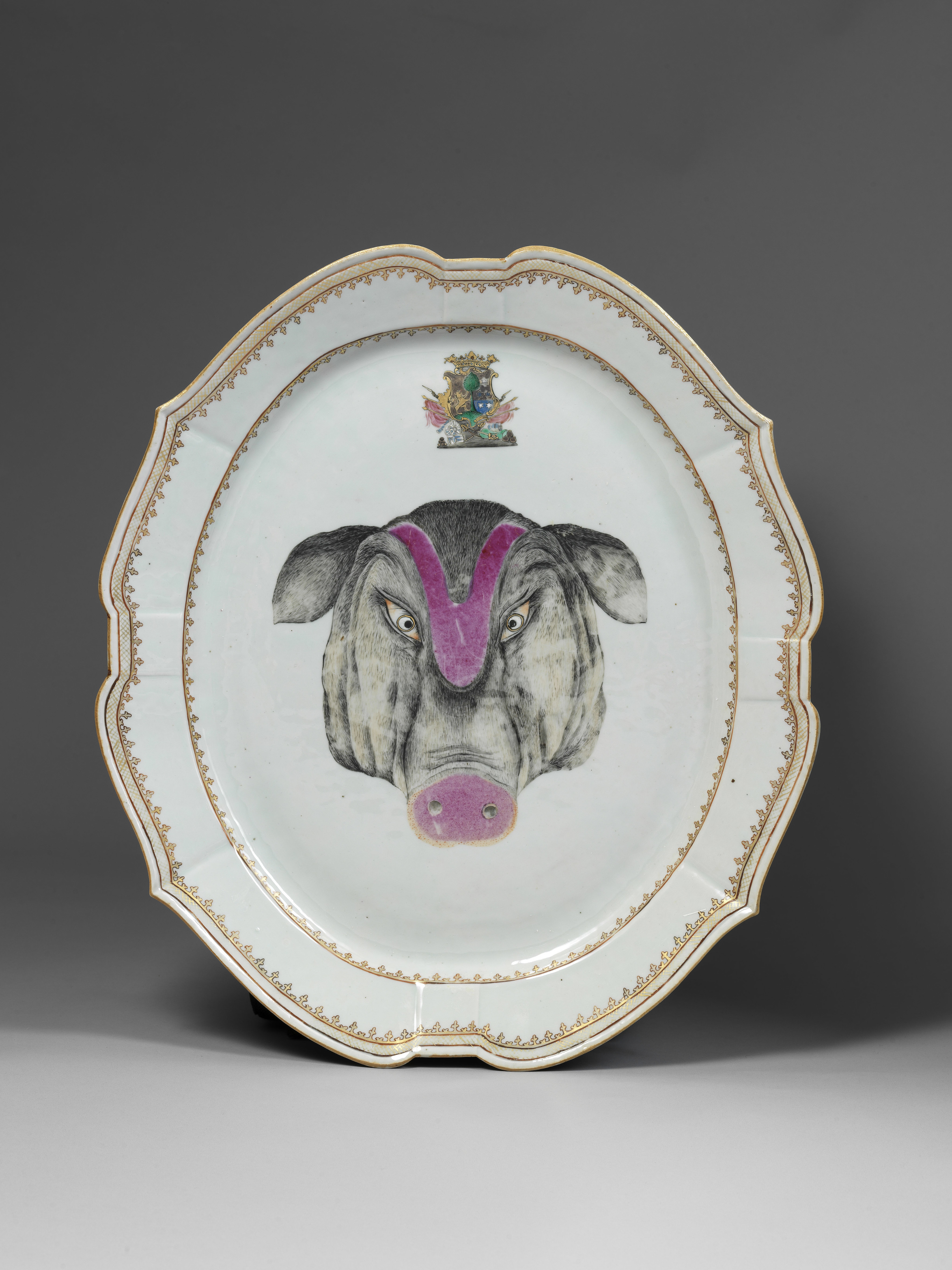
Boar's head tureen stand with unidentified Spanish arms
China - Qing dynasty, Qianlong period (1736-1795), ca. 1760-1780
Porcelain decorated in overglaze famille rose enamels, grisaille and gold
L. 49.5 cm W. 43.5 cm
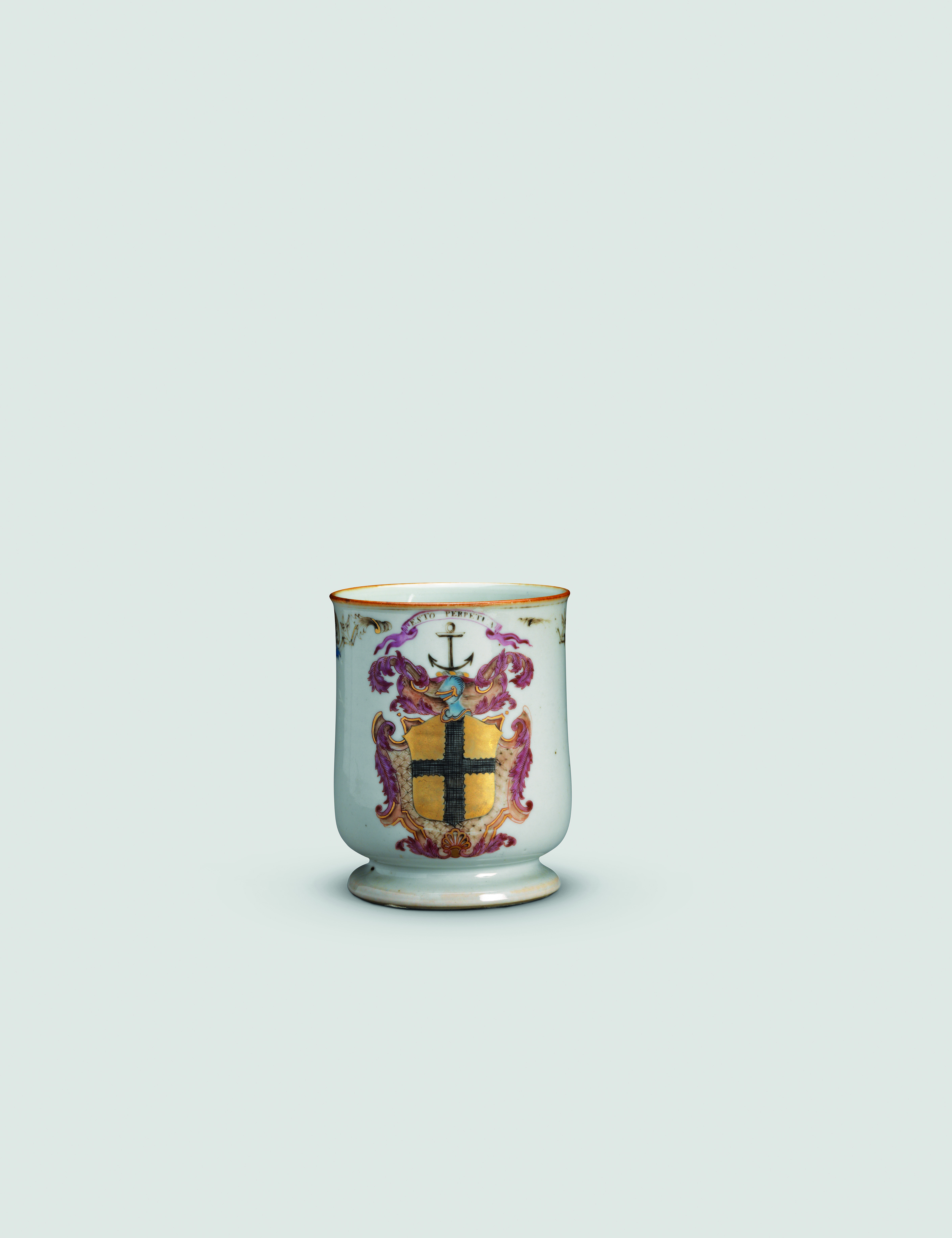
Mug with the arms of the Rait family (Scotland)
China - Qing dynasty, Qianlong period (1736-1795), ca. 1745
Porcelain decorated in overglaze polychrome enamels, grisaille and gold
H. 10.6 cm Ø 13 cm
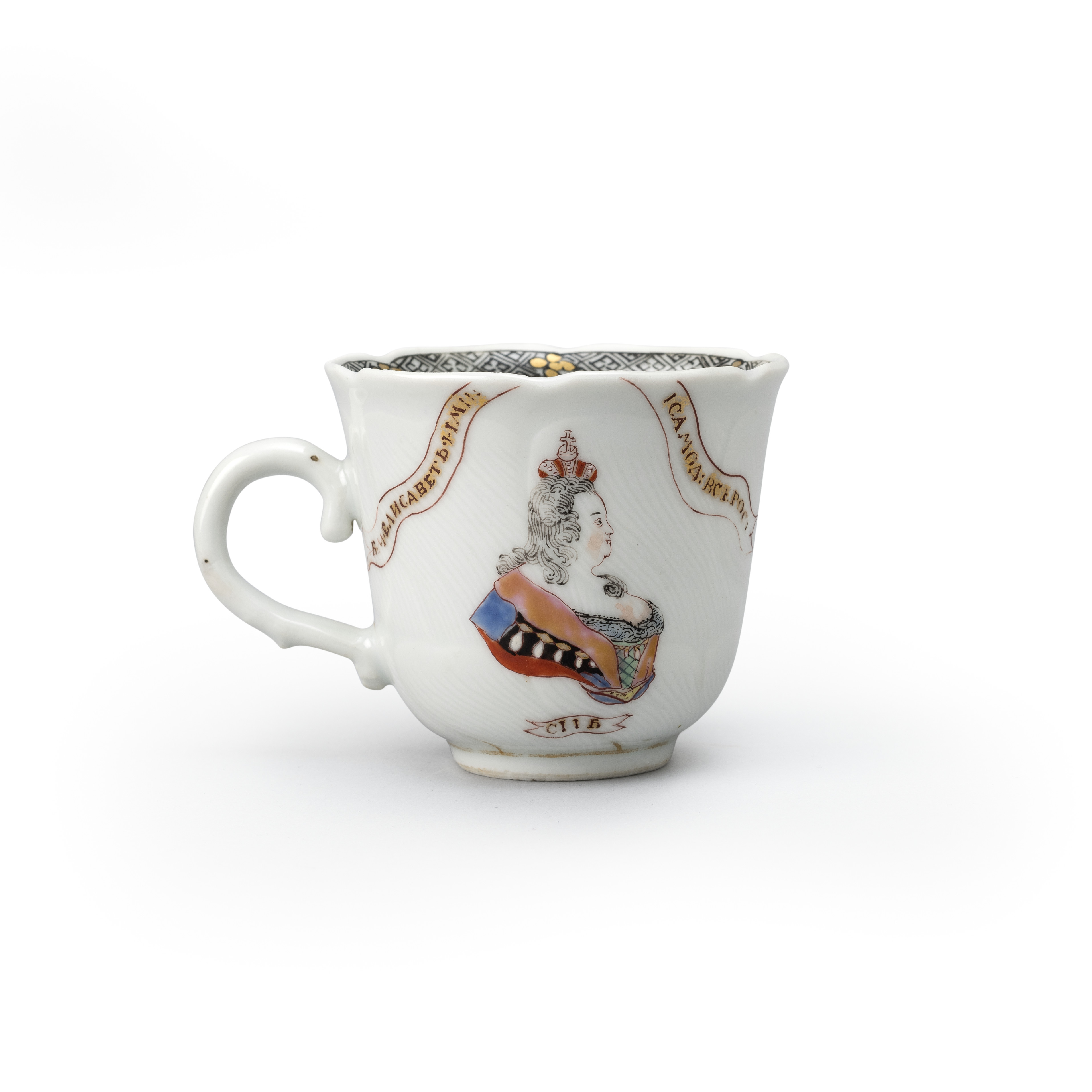
Coffee Cup with Portrait of Elizabeth of Russia and the Imperial Arms of Russia
China - Qing dynasty, Qianlong period (1735-1796), ca. 1745
Porcelain decorated in overglaze polychrome enamels and gold
H. 6.5 cm L. 9.5 cm
Provenance: Khalil Rizk Collection, Woldemar Wehrlin Collection, Leon Grinberg Collection
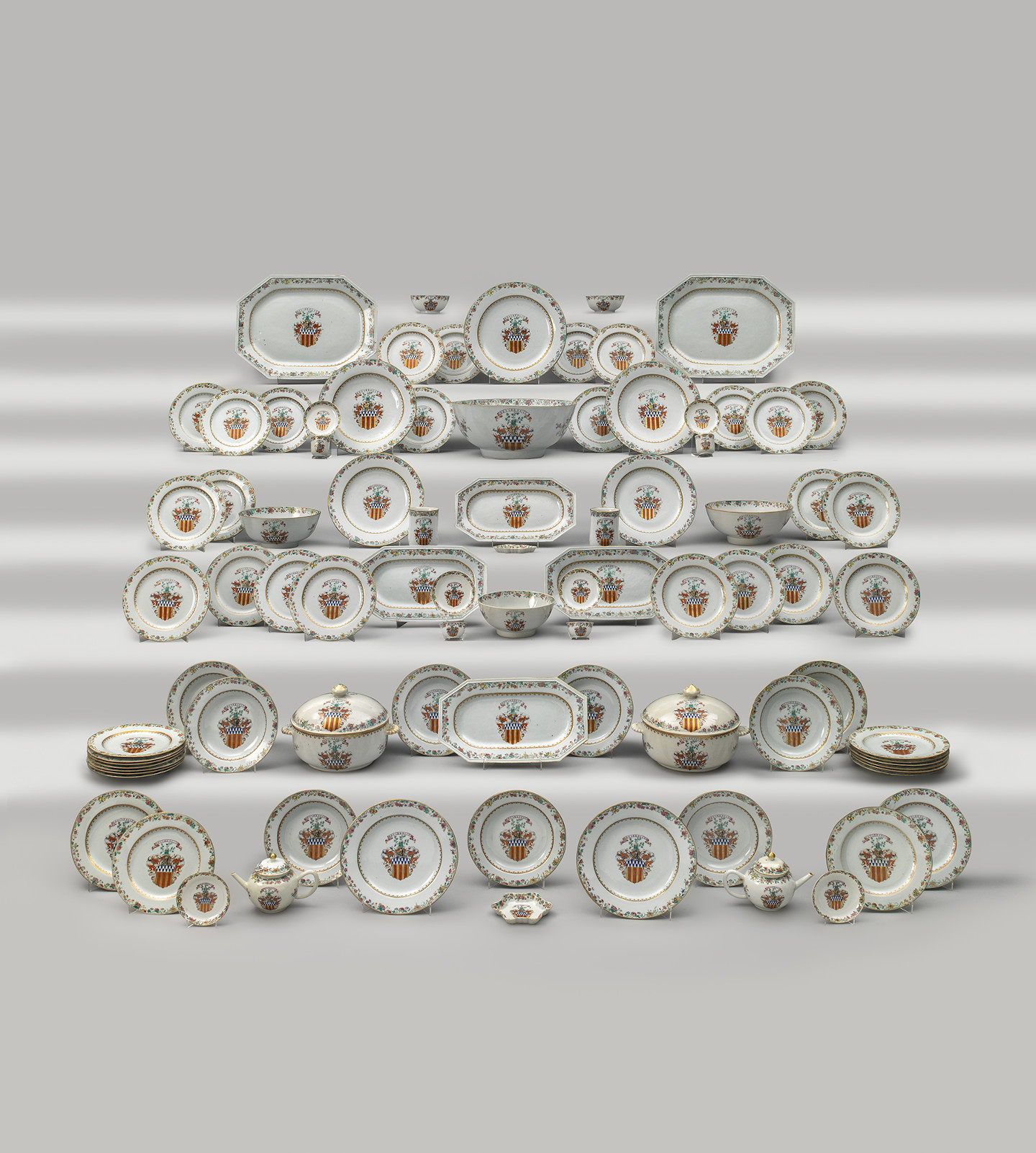
Dinner service with the arms of the Belsches of Tofts (Scotland) comprising 93 pieces
China - Qing dynasty, Qianlong period (1736-1795), ca. 1740-1750
Porcelain decorated in overglaze polychrome enamels and gold
